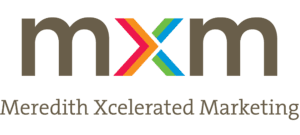Major publishers like Hearst, Vice, Time Inc., The New York Times and Meredith have either built or acquired agency capabilities and content studios over the past few years to create synergies between their content and the brands that monetize it.
Being owned by a publisher allows digital agencies to tap editorial expertise for engaging creative both on and off their parent company’s media properties. It also offers opportunities to share audience data between brands and publishers.
Here’s a look at digital agencies owned by prominent publishers. Scroll down or click on a name to access a profile directly.
- iCrossing
- Virtue
- Harpoon Digital
- T Brand Studio, HelloSociety, Fake Love
- Meredith Xcelerated Marketing
Agency type: Full-service digital, has agency-of-record (AOR) relationships
International or US: International
Number of global employees: 900
Acquired by Hearst in 2010, iCrossing is a full-service digital agency with more than 50 clients including Toyota, AT&T, PepsiCo and Quaker.
Hearst gleans insights on its audience’s digital behaviors while iCrossing can tap into Hearst’s editorial talent, programming and audience data on 300 million monthly unique readers. But the two keep rigid church-and-state lines between media sales and buying, said iCrossing President Mike Parker.
“We’re not here to sell our clients Hearst media or properties,” he said. “We happen to be owned by a publisher, and there are times that’s terrific, but most of the time we act like an independent agency.”
Owner: Vice
Agency type: Full-service, has AOR relationships
International or US: International
Number of global employees: 650
Since launch, Vice has helped advertisers develop creative to reach its edgy audience. In 2008, it formalized that work under creative agency Virtue. Vice continued to acquire agency services such as digital shop Carrot Creative under agency umbrella Virtue Worldwide.
Virtue helps about 50 clients, including Michelin, Lululemon and AB InBev, with campaign strategy, content, audience insights, events and some social media buying. Virtue isn’t required to create for Vice properties, but does when it makes sense.
“The last few years we’ve really made sure that we’re separating Virtue somewhat from Vice to not muddy the waters and to be clear about what our media propositions are,” said Virtue Worldwide CEO Lars Hemming.
Owner: Time Inc.
Agency type: Digital media, performance marketing. Less than 10% of buys are on Time Inc. properties.
International or US: US
Number of global employees: 22
Time Inc. Launched Harpoon Digital in 2016 out of subsidiary MNI Targeted Media, a performance marketing agency that sells technology and services to mid-size, regional agencies.
Half of Harpoon’s clients are regional brands, like Hood Dairy in the Northeast and Rack Room Shoes in the Southeast. The other half are small agencies that need external help with digital.
“It’s more efficient [for small agencies] to work through us versus building out a team, signing for an ad server and paying for syndicated research,” said Matt Fanelli, SVP of digital at Harpoon Digital.
Harpoon can access Time Inc.’s data and audience research for clients and tap into The Foundry, Time Inc.’s content studio. Time Inc. gets boots on the ground to go after local mid-market dollars.
Owner: The New York Times
Agency type: Content studio (T Brand Studio), social influencer network (HelloSociety) and experiential marketing (Fake Love). Half of work involves The New York Times’ media.
International or US: International
Number of global employees: 150
The New York Times owns three agencies: content studio T Brand Studio, social influencer agency HelloSociety and experiential shop Fake Love. It has also launched a yet-to-be-named brand content strategy group.
Each agency has its own clients and P&L, but the Times often packages and sells their services paired with its own media, said Sebastian Tomich, SVP of advertising and innovation at the Times.
Agencies have “unfettered access” to The New York Times’ data, Tomich said. Roughly half of agency work includes a Times media buy, but brands often extend that work off-platform.
“A traditional agency model has independent agencies representing different functions like strategy, creative, media and planning. It’s a long, laborious, expensive process,” Tomich said. “In this new world, you can execute all of that with a single media partner, in one process, at a fraction of the cost.”
Owner: Meredith
Agency type: Digital content, does some native advertising for Meredith publications
International or US: International
Number of global employees: 500
Meredith has been creating marketing content for its advertisers since 1969. In 2008, it acquired six digital agencies to formalize that work into digital content agency MXM.
MXM services around 80 clients, including Kraft-Heinz, Volkswagen, Bank of America, Sun-Maid and Benjamin Moore, on digital development, content and CRM. It also does social media marketing for top TV shows like “The Walking Dead”.
“Today the kind of work we’re doing still has a lot of content,” said Georgine Anton, president at MXM. “But we also build interactive tools, websites and apps.”
MXM can tap into insights on Meredith’s 100 million monthly unique readers and its editorial expertise, research and data to keep clients ahead of trends. MXM doesn’t have to buy content on Meredith, but when it does, it produces native advertising campaigns on its properties.




















